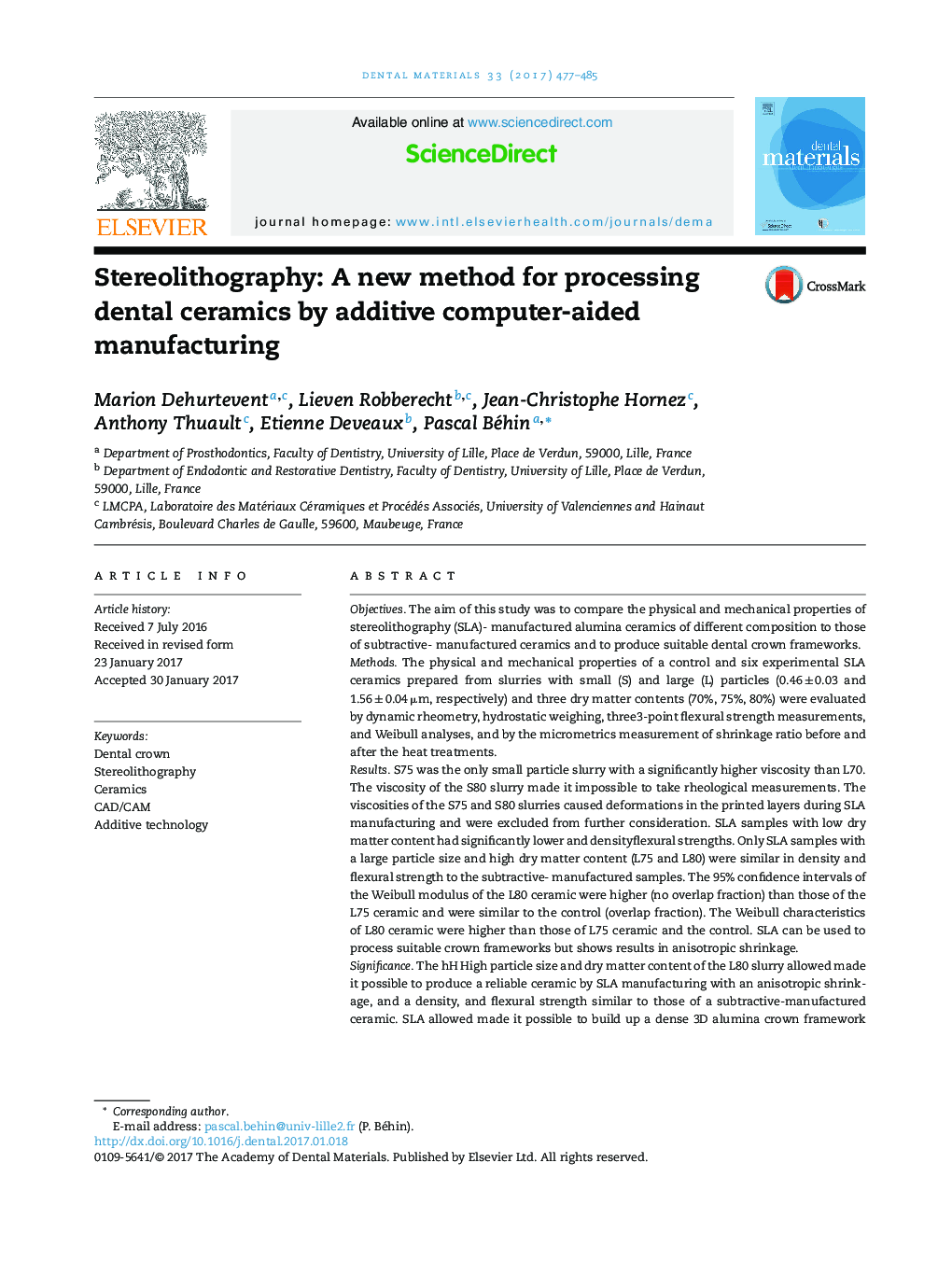| کد مقاله | کد نشریه | سال انتشار | مقاله انگلیسی | نسخه تمام متن |
|---|---|---|---|---|
| 5432950 | 1398049 | 2017 | 9 صفحه PDF | دانلود رایگان |

ObjectivesThe aim of this study was to compare the physical and mechanical properties of stereolithography (SLA)- manufactured alumina ceramics of different composition to those of subtractive- manufactured ceramics and to produce suitable dental crown frameworks.MethodsThe physical and mechanical properties of a control and six experimental SLA ceramics prepared from slurries with small (S) and large (L) particles (0.46 ± 0.03 and 1.56 ± 0.04 μm, respectively) and three dry matter contents (70%, 75%, 80%) were evaluated by dynamic rheometry, hydrostatic weighing, three3-point flexural strength measurements, and Weibull analyses, and by the micrometrics measurement of shrinkage ratio before and after the heat treatments.ResultsS75 was the only small particle slurry with a significantly higher viscosity than L70. The viscosity of the S80 slurry made it impossible to take rheological measurements. The viscosities of the S75 and S80 slurries caused deformations in the printed layers during SLA manufacturing and were excluded from further consideration. SLA samples with low dry matter content had significantly lower and densityflexural strengths. Only SLA samples with a large particle size and high dry matter content (L75 and L80) were similar in density and flexural strength to the subtractive- manufactured samples. The 95% confidence intervals of the Weibull modulus of the L80 ceramic were higher (no overlap fraction) than those of the L75 ceramic and were similar to the control (overlap fraction). The Weibull characteristics of L80 ceramic were higher than those of L75 ceramic and the control. SLA can be used to process suitable crown frameworks but shows results in anisotropic shrinkage.SignificanceThe hH High particle size and dry matter content of the L80 slurry allowed made it possible to produce a reliable ceramic by SLA manufacturing with an anisotropic shrinkage, and a density, and flexural strength similar to those of a subtractive-manufactured ceramic. SLA allowed made it possible to build up a dense 3D alumina crown framework with controlled shape. Further studies on the marginal adaptation and shrinkage model of alumina crown frameworks will be required to optimize the process.
Journal: Dental Materials - Volume 33, Issue 5, May 2017, Pages 477-485